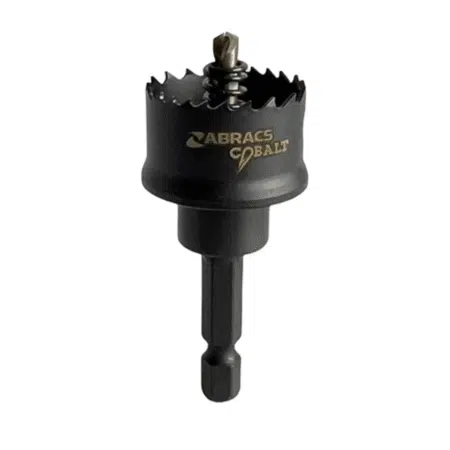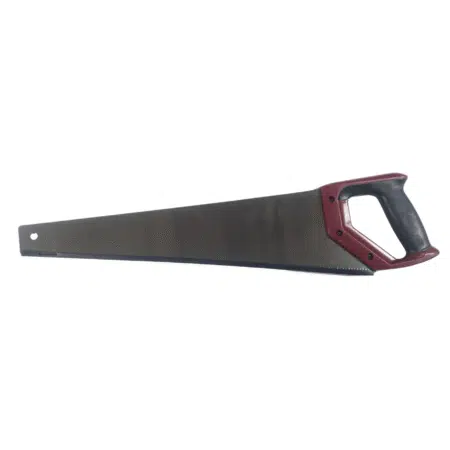QED301 disposable foam ear plugs offer a simple solution for noise reduction, providing you with a barrier against disruptive sounds. In this post, you will explore their effectiveness in various environments, understand their acoustic properties, and learn about their comfort level for extended wear. By analysing QED301, you can determine if these ear plugs meet your needs for peace and quiet, whether at home, work, or during travel.
Key Takeaways:
- Disposable foam ear plugs provide significant noise reduction, making them effective for various noisy environments.
- They are designed for single use, ensuring hygiene and maximum effectiveness when worn properly.
- Comparative studies indicate that the performance of foam ear plugs can vary based on fit and foam density.
 Understanding Disposable Foam Ear Plugs
Understanding Disposable Foam Ear Plugs
Disposable foam ear plugs are designed for quick and convenient use, providing a practical solution for noise reduction in various environments. Their lightweight nature and compressible design make them easy to insert into the ear canal and remove when no longer needed. Often used for sleep, travel, and noisy work conditions, these ear plugs can significantly enhance your auditory comfort without requiring extensive maintenance or cleaning.
Materials and Design
Typically made from soft polyurethane foam, disposable ear plugs are designed to expand upon insertion. This expanding feature creates a snug fit that seals the ear canal, maximising sound isolation. The ergonomic design ensures comfort over extended wear, while their portable size allows you to carry them easily in pockets or bags.
Sound Attenuation Capabilities
Your disposable foam ear plugs offer impressive sound attenuation, capable of reducing noise levels by up to 32 decibels. This makes them suitable for a variety of situations, from sleeping in noisy environments to protecting your hearing during loud events. With their NRR (Noise Reduction Rating) effectively lowering ambient sound, you can enjoy greater peace and quiet.
For instance, if you’re using them in a concert setting, the NRR means that even the loudest music won’t be overwhelming. In practical terms, this allows you to immerse yourself in the experience without damaging your hearing. The effectiveness of sound attenuation can vary based on individual ear canal shapes and proper insertion techniques, so you may need to experiment with different brands or sizes to achieve optimal performance.
Effectiveness of QED301 Foam Ear Plugs
QED301 foam ear plugs provide a high level of noise attenuation, making them effective for a variety of environments, from loud concerts to construction zones. Their reliable sound reduction rating (SNR) ensures that you can focus on your tasks without distractions. Users often report a noticeable difference in noise levels, enabling a more peaceful experience, whether you’re attending an event or simply trying to sleep in a noisy setting.
User Experience and Feedback
Many users commend the QED301 ear plugs for their comfort and ease of use. You’ll find that their soft texture and lightweight design make them easy to wear for extended periods. Feedback often highlights their ability to conform to the shape of your ear, resulting in a snug fit that enhances their noise-blocking capability. Overall, satisfaction ratings are high, indicating that many prefer these ear plugs over others on the market.
Comparative Analysis with Other Brands
When comparing QED301 foam ear plugs with other brands, distinct advantages emerge. The QED301 typically offers a superior noise reduction rating, outpacing many competitors in the same price range. Additionally, their durability and comfort often receive higher marks in user reviews, making them a preferred choice for prolonged use.
Comparative Analysis with Other Brands
| Brand | Noise Reduction Rating (SNR) |
| QED301 | 35 dB |
| Brand X | 32 dB |
| Brand Y | 30 dB |
| Brand Z | 28 dB |
In this comparative analysis, the QED301 ear plugs stand out due to their exceptional SNR of 35 dB, significantly outperforming Brand X, Brand Y, and Brand Z. Their performance can make a noticeable difference in your experience in loud environments, as a higher SNR directly correlates to greater noise isolation. For users prioritising effective sound attenuation, choosing QED301 is a solid investment.
Advantages of Using Foam Ear Plugs
Foam ear plugs, particularly the QED301, offer several advantages that make them a preferred choice for many. They excel in reducing ambient noise, which is especially beneficial in high-noise environments such as construction sites or during flights. Their disposable nature ensures hygiene, while their lightweight design makes them easily portable. With various sizes available, you can find a fit that suits your comfort and needs.
Comfort and Convenience
Regarding comfort, QED301 foam ear plugs excel thanks to their soft, compressible materials. You can wear them for extended periods without discomfort, making them ideal for sleeping or concentrating in noisy settings. Their easy insertion and removal allow you to quickly adapt to changing noise environments, enhancing your convenience throughout the day.
 Cost-Effectiveness
Cost-Effectiveness
Foam ear plugs present a cost-effective solution for noise reduction. Typically, you can purchase a large batch of QED301 plugs at a fraction of the expense of more permanent hearing protection solutions. This affordability is particularly attractive for those who need to replace their ear plugs frequently or use them in various situations.
Considering the price point, you’ll find that a box of disposable foam ear plugs can cost as little as £5 for a pack of 50, which breaks down to just 10 pence per pair. This makes them an economically sound choice compared to custom ear plugs, which can run into the hundreds of pounds. AF4F price for 200. Moreover, the effectiveness of QED301 in blocking out sound allows you to achieve peace and focus without the financial burden, making them an accessible option for everyone, from students studying in noisy environments to construction workers needing noise reduction on site.
Limitations and Considerations
Despite their benefits, disposable foam ear plugs come with limitations. They may not fit everyone perfectly, risking inadequate noise reduction. Additionally, prolonged use can lead to ear irritation or infections if proper hygiene is not maintained. It’s imperative to evaluate your specific needs and environment when choosing these ear plugs to ensure they provide the necessary protection.
Potential Risks and Concerns
Using disposable foam ear plugs carries potential risks, including allergic reactions to the materials, which can cause discomfort. Over-reliance on ear plugs may also lead to diminished auditory sensitivity, making you less aware of important sounds in your environment, such as alarms or approaching vehicles, thereby posing safety concerns.
Proper Usage Guidelines
To maximise the effectiveness of disposable foam ear plugs, ensure they are inserted correctly. Roll the ear plug into a tight cylinder and gently insert it into your ear canal, holding it in place until it expands fully. Ensure your hands are clean before handling the ear plugs to avoid introducing bacteria into your ears. Additionally, try to avoid sharing ear plugs and replace them regularly to maintain hygiene.
For optimal performance, choose ear plugs that fit snugly without excessive pressure. You should inspect them before use for any damage or degradation. If you experience any discomfort or excessive ear wax build-up, reconsider the usage frequency. Always prioritise personal hygiene by washing your hands before touching the plugs, and store them in a clean, dry place to avoid contamination. Following these guidelines will enhance both comfort and effectiveness in noise reduction.
Recommendations for Optimal Use
For maximum effectiveness, you should ensure proper fitting and usage of disposable foam ear plugs. They work best when fully inserted into the ear canal, creating a snug seal that blocks out sound. It’s advisable to use them in environments with consistent noise, such as at concerts, construction sites, or while sleeping. Pay attention to the manufacturer’s instructions regarding usage duration to maintain ear health.
Best Practices for Insertion and Removal
To achieve the best seal, start by rolling the ear plug between your fingers to compress it. Gently insert it into your ear canal while pulling your earlobe down to straighten the ear canal. Hold it in place until it expands and fills the space. Upon removal, grasp the ear plug gently and twist it slightly before pulling it out to avoid discomfort.
Maintenance and Storage Tips
Though disposable, ensuring cleanliness can enhance the performance of foam ear plugs. Store them in a cool, dry place away from direct sunlight to prevent degradation of material. Avoid exposing them to moisture or dust to maintain their integrity. Regularly check for signs of wear and replace them if they become discoloured or lose their shape. The following practices will help keep your ear plugs in optimal condition:
- Keep them in their original case or a clean, breathable pouch.
- Avoid excessive handling to maintain hygiene.
- Replace them regularly, ideally after a few uses, depending on the environment.
Using proper storage methods is key to prolonging the life of your ear plugs. An airtight container is not ideal as it can promote moisture retention. For hygiene, wash your hands before handling ear plugs and consider marking regular usage dates to track effectiveness. The cleanliness and correct storage directly influence their performance and your comfort.
- Designate a specific storage area to avoid misplaced plugs.
- Consider using individual bags for each pair for added cleanliness.
- Dispose of them responsibly to support environmental sustainability.
Conclusion
Conclusively, disposable foam ear plugs, such as the QED301, demonstrate significant effectiveness in reducing noise levels, thereby enhancing your auditory comfort in various environments. Their lightweight design ensures easy use and portability, making them a practical choice for both daily activities and specialised situations. By providing a reliable barrier against disruptive sounds, these ear plugs can improve your overall quality of life, particularly in noisy settings. Ultimately, incorporating QED301 ear plugs into your routine can be a simple yet impactful way to safeguard your hearing health and enhance focus.
FAQ
Q: What are disposable foam ear plugs used for?
A: Disposable foam ear plugs are primarily designed to reduce noise levels in various environments, making them ideal for sleeping, studying, or working in loud settings. They provide a convenient option for temporary or occasional use.
Q: How effective are QED301 disposable foam ear plugs at noise reduction?
A: QED301 disposable foam ear plugs offer a high level of noise reduction. They are rated with a Noise Reduction Rating (NRR) that typically ranges around 30 decibels, making them effective in diminishing harmful or disruptive sounds.
Q: What is the comfort level of QED301 ear plugs?
A: QED301 ear plugs are designed for comfort, featuring a soft foam material that conforms to the shape of the ear canal. This ensures a snug fit while minimising discomfort during prolonged use.
Q: Can QED301 ear plugs be reused?
A: No, QED301 ear plugs are intended for single use only. Reusing them can compromise their effectiveness in noise reduction and hygiene, as they may accumulate dirt and bacteria after initial use.
Q: How should I properly insert QED301 ear plugs?
A: To insert QED301 ear plugs, roll the foam between your fingers to compress it, then gently insert it into the ear canal while holding the outer ear back. Allow the foam to expand to fill the canal for a secure fit.


 Understanding Disposable Foam Ear Plugs
Understanding Disposable Foam Ear Plugs Cost-Effectiveness
Cost-Effectiveness


